| Genetics

January
2010, Response to this article in the Proceedings of the National
Academy
of Sciences
African Village Dogs, their
Relationships
to each other, Other Breeds, including Basenji, Pharaoh Hound,
Rhodesian
Ridgeback, Saluki and Afghan hound
Summary by Dr.
Dominique
de Caprona
© de Caprona
2009
No
Sloughi,
Azawakh,
Aidi
or AfriCanis in this study
All
photographs copyrighted to their photographers. Please do not use for any
purpose without asking.
Some of the dogs in
this
study, from North (Egypt) to South (Namibia). The muzzle is to control
the dog during blood sampling.
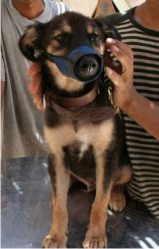 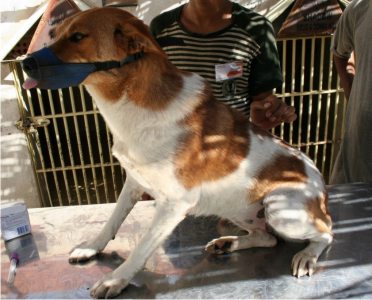
Egypt (Giza)
©
Carlos D. Bustamante Laboratory.
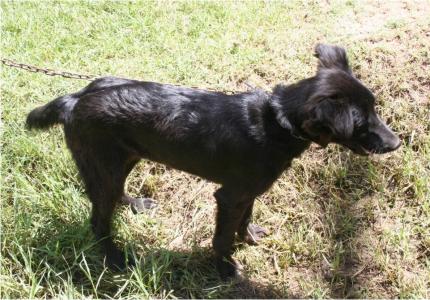 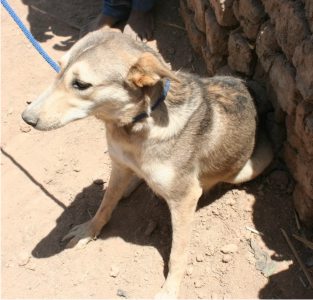
Egypt (Kharga)
© Carlos
D. Bustamante Laboratory.
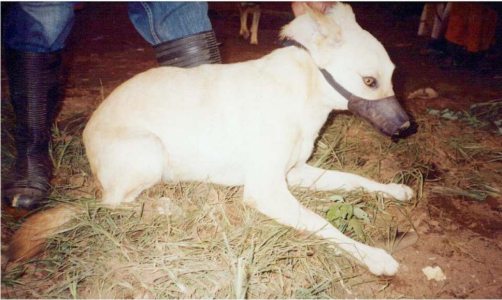 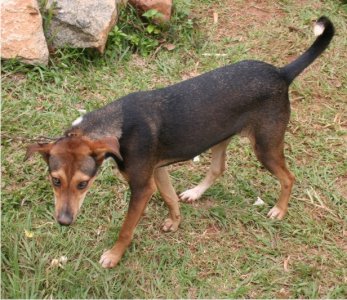
Uganda Koome
island
~ Uganda mainland (Busoba) © Carlos D. Bustamante Laboratory.
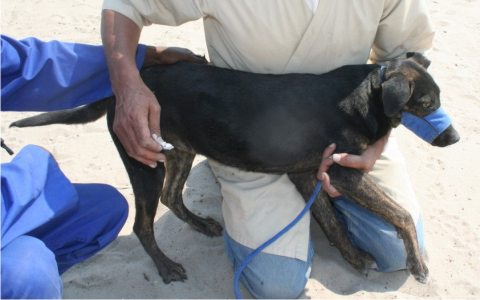 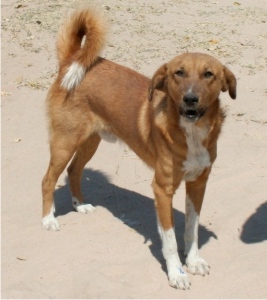 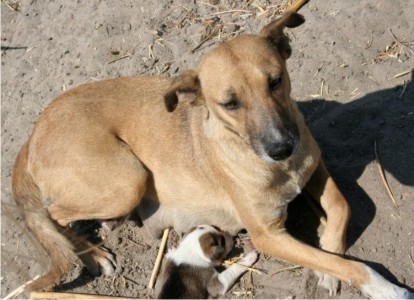
North Namibia
(Okanbjengedhi)
~ North Namibia (Onhuno) ~ North Namibia (Oshikango) ©
Carlos
D. Bustamante Laboratory.
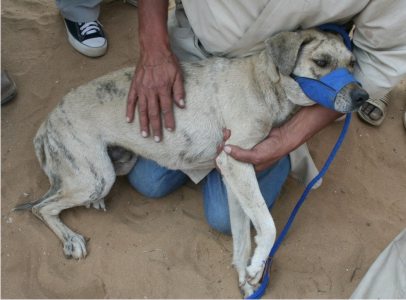
North Namibia (Cham
Cham)
© Carlos D. Bustamante Laboratory.
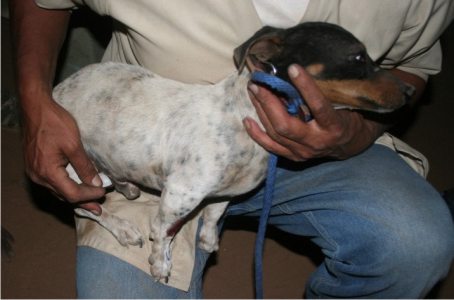 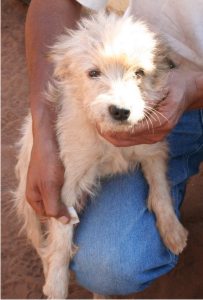 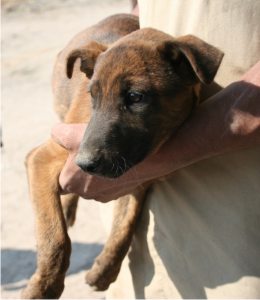
Central Namibia
(Tsumeb)
~ Central Namibia (Otavi) ~ Central Namibia (Grootfontaine)
©
Carlos D. Bustamante Laboratory.
The study
entitled "Complex
population structure in African village dogs and its implications for
inferring
dog domestication history" by Adam R. Boyko et al. (2009) was
carried
out to ascertain the genetic diversity of African village dogs and
compare
it to the high sampling diversity of East Asian village dogs which is
used
to argue that domestication of the dog happened in East Asia.
318 of semi-feral
village
dogs from 7 regions in Egypt, Uganda, and Namibia, were sampled and
compared
with 126 breeds of western bred dogs including Basenji, Afghan hounds,
Salukis, Pharaoh hounds, Rhodesian Ridgebacks, Salukis, as well as with
Puerto Rican street dogs, and mixed-breed dogs from the United States
of
America.
Egypt: dogs
were sampled in three distinct locales:Giza (animal shelter), Luxor
(animal
shelter and surroundings), and Kharga (rural desert oasis). The
geographic
distance between Giza and Luxor is greater than that between Kharga and
Luxor, but the desert could be a strong barrier to gene flow between
Kharga
and Luxor resulting in their populations being more genetically
distinct.
Uganda: 100
dogs
were
sampled
from a cluster of villages east of Kampala and 30 dogs
from three neighboring isleands of the KomeIsland group in Lake
Victoria.
Although the islands are close to each other and just 20 km off the
mainland,
the authors expected the lake might act as a genetic dispersal barrier.
Namibia:
Dogs from over a dozen villages and urban areas in the northern and
central
parts of the country were sampled. There are no natural barriers
between
sampling locations. However, a cordon fence exists which keeps
livestock
diseases from the North out of the southern part of the country. Dogs
are
not forbidden to go across the cordon and can get through the fence
themselves.
Dogs within 100 km of both sides of the cordon were sampled, as well as
from populations within 10–20 km of the fence, to see whether this
fence
had any isolating effect.
To determine the
degree of
non-native admixture in African dogs the following populations were
sampled
16 Dogs of two
shelters
in Puerto Rico,
102 known
mixed-breed dogs
from the United States of America
Samples from dogs
from previous
studies (Parker et al.) representing 126 breeds, including 129 dogs of
the following breeds (western bred): Afghan hounds, Basenjis, Pharaoh
hounds,
Rhodesian Ridgebacks, and Salukis were use for comparison.
Mitochondrial
DNA (mtDNA), microsatellites,
and SNP markers were used to characterize population structure
and
genetic diversity.
Mitochondrial
DNA:
680 bp of the mitochondrial D-loop were sequenced, including the 582-bp
region described previously by P.Savolainen et al. (2002)
Microsatellites: 227
village
dogs
were
typed on a 89-microsatellite panel.
SNP markers:
300
SNP markers were analysed from 168 village dogs, 102 mixed-breed dogs,
and 126 western bred breeds.
Microsatellites,
and
SNP
markers:
The authors found
that Puerto
Rican street dogs clustered with the mixed-breed dogs from the United
States,
indicating these dogs are all breed admixtures.
For the other
populations
five groupings were consistent for the African village dogs: the
Egyptian
dogs, the Ugandan mainland dogs, the Kome Island dogs, the Northern
Namibian
dogs, and admixed dogs in a few of the village dogs.
84% of African
village
dogs outside of central Namibia showed little or no evidence of
non-native
admixture, whereas all central Namibian dogs had more than 25%
admixture,
most with more than 60%.
Central Namibian
dogs show
virtually no genetic differentiation from American mixed breed dogs.
Egyptian dogs from
Giza
and Luxor show little differentiation also.
A clear
separation
was found between Egyptian and sub-Saharan populations and between
Ugandan
and Namibian populations.
Dogs from
Kharga were
the most distinct whereas dogs from mainland Uganda and northern
Namibia
(2,900 km apart) show only moderate differentiation.
Three breed
groups
were differentiated: Basenjis on their own, Salukis and Afghan hounds
clustering
close together*,Rhodesian
Ridgeback
clustering
with
the Pharaoh hound.
Mitochondrial
Diversity:
47 haplotypes were
found
in the African dogs, 9 haplotypes in the Puerto Rican dogs, two
of
which found also in the United States mixed breeds All haplotypes were
in the A (33 African haplotypes), B (6 African haplotypes), or C
(8African
haplotypes) clades, the 3 which are believed to contain 95% of domestic
dogs.
18 of the African
haplotypes
haf not been described by Savolainen et al.: 14 in A clade, 1 in B
clade,
and 3 in C clade. The Puerto Rican and United States mixed-breed dogs
had
8 A clade and one B clade haplotypes (1 haplotype, a Puerto Rican A
clade
haplotype, was not previously described)
Local mtDNA
diversity
did not differ systematically between African regions and similarly
sized
regions in East Asia, the purported origin of domestic dogs.
Conclusions
This study shows
that African
village dogs have complex population structure resulting from
geographic
distance, local gene flow barriers, and the presence or absence of
non-african
DNA in some populations. Most importantly the vast majority of the
African
village dogs could be classified as indigenous (less than 25% of
non-African
ancestry) and some as non-native (more than 60% of non-African
ancestry).
Only 7 % showed intermediate level of African ancestry.
The authors state:"The
lack
of
consistent
levels of admixture within regions suggests that
non-indigenous
dog genes are quickly removed from village dog populations, or that
admixture
with non-indigenous dogs is a very recent phenomenon in these areas."
The populations
with non-native
ancestry were from central Namibia, where every dog had significant
levels
of non-african admixture, and Giza, where all dogs showed some, usually
low, level of admixture. This background level of admixture in Giza is
thought by the authors to reflect the relative proximity of Giza to
Eurasia.
Groupings were detected among the admixed dogs which could result from
ancestral breeds being different in various individuals.
The African
village dogs
grouped in a large cluster separated from the Basenji, Saluki/Afghan
Hound,
Rhodesian Ridgeback/Pharaoh Hound clusters. The Egyptian village
dogs were somewhat closer to the Saluki/Afghan, the Ugandan and North
Namibian
dogs closer to the Basenji. The Rhodesian Ridgebacks and Pharaoh hounds**were
closer to mixed-bred dogs, suggesting these breeds have had admixture
of
non-African dogs.
Influence of
barriers
to gene flow:
The 230 km of desert
separating
the Kharga oasis from Luxor led to much stronger differentiation
between
the populations of village dogs in these areas, than the 500 km Nile
corridor
between Luxor and Giza.
The dogs from the
Kome islands
which lie 10–20 km from the mainland in Lake Victoria were much more
differentiated
from mainland dogs in Uganda than were northern Namibian populations
2,900
km away.
Heterozygosity was
high
across all genetic marker types in all village dog populations except
those
of the Kharga oasis and the Kome islands (populations which are more
isolated
and likely smaller, resulting in higher levels of inbreeding).
A surprising
result:
the samples taken at a 20–100 km distance between northern and central
Namibian populations on each side of that country’s Red Line veterinary
cordon fence showed a stark population boundary—dogs north of the
cordon
averaged 87% indigenous African ancestry while those south of the
cordon
were only 9%African. For the past 100 years, this fence under
police
watch has separated the indigenous human populations (to the north)
from
white settlers (to the south)***.
This
fence is now used to restrict livestock from crossing southward.
In their own
words, the authors
state: "African village dogs exhibited a similar level of mitochondrial
D-loop diversity to that of the dogs sampled by P. Savolainen at
al.(2002)
in East Asia, the putative site of dog domestication. Although we do
not
suggest that Africa is actually the site of dog domestication, we do
believe
that an East Asian origin of dogs should be further scrutinized,
especially
as Africa also has numerous private haplotypes and East Asia has no
private
haplogroups, with the possible exception of clade E"
Aknowledgements
I thank A.R.Boyko
for reviewing
this text and for granting permission to use the photos of African
village
dogs, as well as all the other photographers who provided pictures for
this page.
References
Adam R. Boyko,
Ryan H.
Boyko, Corin M. Boyko, Heidi G. Parker, Marta Castelhano, Liz Corey,
Jeremiah
D. Degenhardt, Adam Autona, Marius Hedimbi, Robert Kityo, Elaine A.
Ostrander,
Jeffrey Schoenebeck, Rory J. Todhunterd, Paul Jones, and Carlos D.
Bustamante
(2009):"Complex population structure in African village dogs and its
implications for inferring dog domestication history" in
Proceedings
of the National Academy of Sciences.
P. Savolainen,
Zhang Y,
Luo J, Lundeberg J, Leitner T (2002): "Genetic evidence for an
East
Asian origin of domestic dogs." Science 298:1610–1613.
Author's notes:
* Among the
countries of origin of the Saluki (Arabian peninsula, Syria, Iran,
Iraq)
Iran shares borders with the country of origin of the Afghan Hound
(Afghanistan).
**
The Pharaoh Hound is indigenous to the island of Malta in the
Mediterranean
sea, not far from other European breeds. The Rhodesian Ridgeback is
considered
to have been developed by crossing the indigenous Hottentot ridged dogs
with dogs imported by the Dutch, German and Huguenot settlers in the
16th
and 17th centuries (Danes, Mastiffs, Greyhounds, Salukis, Bloodhounds).
*** The
German settlers had imported European breeds.
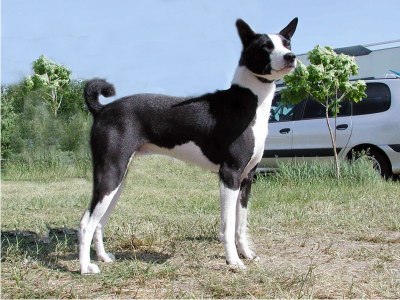 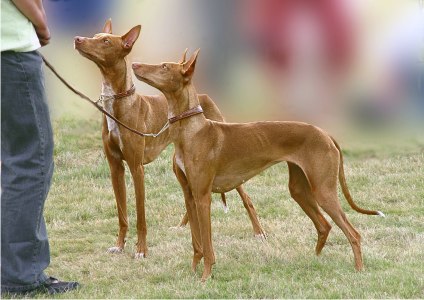
Basenji and
Pharaoh
Hounds, both © Schwab
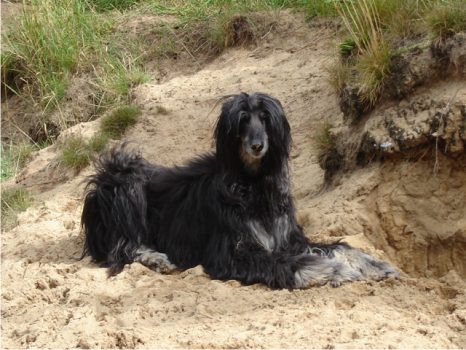 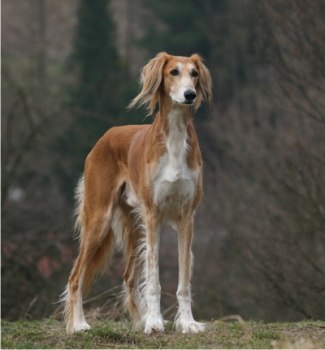
Afghan Hound ©
Liz
Gross von Hübbenet ~ Saluki ©
Nina
Neswadba
 
Rhodesian Ridgebacks
showing
their ridges © Bonnie van den Born ~ Rhodesian
Ridgeback
©
von
Elm-Weber
.
ABOUT
THE
AUTHOR |

